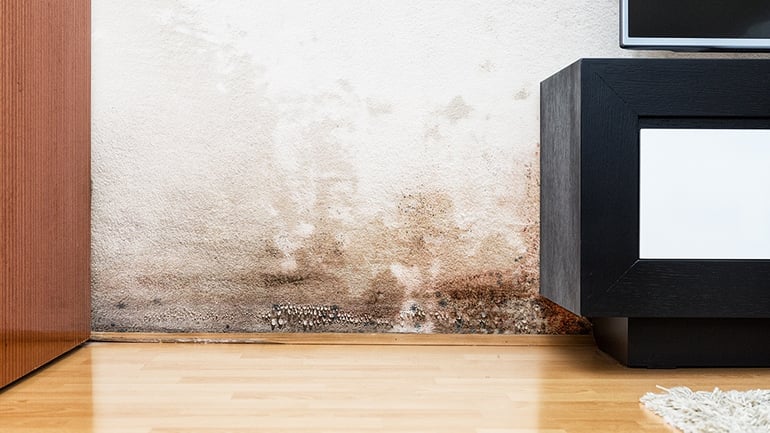
The answer is mold and mildew buildup. These spores need only four things, including food, which is organic materials like dust and dirt. The others are darkness, moisture, and warmth (around 80 degrees Fahrenheit).
Dirty evaporator coil:
If your evaporator coil is iced up or you have a weak airflow from the supply vents, you’ll start to smell a stale odor. Your evaporator coil naturally has all of the elements. It’s located in a dark area, the blower blows warm air, and moisture forms on the coil when warm air flows over it.
Because this appliance is hard to reach and most people don’t regularly change their air filters, it’s most likely dusty from the condensation.
Prevent mold from growing on the coil again by installing an ultraviolet germicidal lamp.
Clogged condensate drain line:
If your air conditioner shuts down after running for only a short while or you see water pooling around the indoor unit, prepare for the stench.
When enough condensation forms on the evaporator coil, it drops into a drain pan and exits out a drain line. If the drain line gets clogged, water backs up into the drain pan and mold has everything it needs to grow.
For a solution, clear the condensate drain line or hire a professional to clean it for you.
If your air conditioner runs but struggles to cool your home, your home gets dusty quickly, or your air conditioner doesn’t stop high home humidity, you might smell staleness .
The air ducts carry air throughout your home, but if they leak or disconnect in a dirty, non-living area (like your attic or crawl space), they draw in surrounding air, which is usually filled with dirt, dust, and mold spores.
You need brand-new sealing to eliminate the leaks and air duct cleaning to get rid of any unwanted debris.
Water buildup:
Mold and mildew can also be caused by humid air from water build-up in bathrooms, thanks to leaky faucets or showers. Cracked foundations, leaky roofs, and basements are also perfect environments for these allergens and pathogens to flourish, especially if rain seeps in.
How To Get Rid Of It:
According to Mrs. Clean, “a combination of moisture, lack of air circulation (stagnant air), and darkness...allow mold [and] mildew...to grow,” which emits a gas. This gas has a familiar odor that smells old or stale.
Once the smell has permeated the area, it’s difficult to remove it. Sometimes only drying the damp area isn’t enough to help. You should scrub the affected walls, floors, and furniture with this organic cleaning solution:
- One part boric acid
- Two parts white vinegar
- Two parts hydrogen peroxide
- Four parts water
You can also use:
- Zeolite, a long-lasting natural mineral that absorbs odor without a perfume or masking agent
- Activated charcoal, which is pure charcoal specially prepared for absorbing impurities
- White vinegar and baking soda combination
Follow Warner Service’s few tips for the best results possible:
- Don’t saturate anything or leave wet spots since too much moisture can aggravate the situation.
- Always ventilate the area with fans and open windows.
- Keep your windows and/or doors open as long as possible to get fresh air flow through the house.
If you're thinking, "Why does the air in my house smell stale?" You have your answer now.
Aside from the unpleasant odor, mold and mildew can make it harder for your family to breathe easy. Take our tips for removing that stale smell before it sticks around your home for good.
You can also download Warner Service’s popular Indoor Air Quality Guide to ensure that you're breathing in clean, fresh air.


